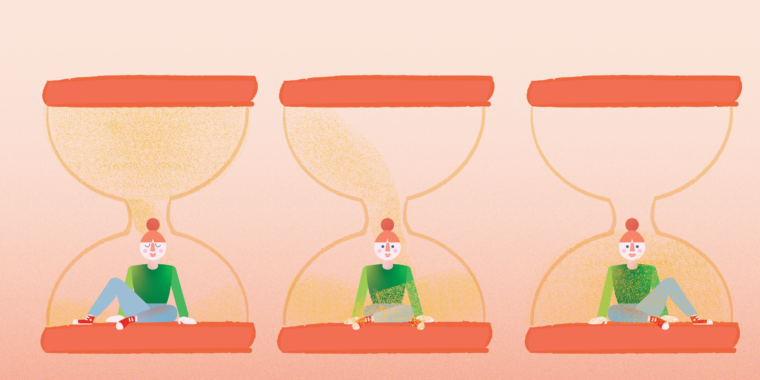How long is a month? Logically, the answer is simple: from 28 to 31 days. But the human mind does not always work on logic.
“A month is a month, right?” asks Robyn LeBoeuf, professor of marketing at Olin Business School. “But for a child, waiting a month for Christmas can seem interminable, while the month at the end of summer feels all too short.”

These kinds of perception biases can help us more deeply understand everyday decision-making, according to LeBoeuf’s latest research. “Marketing is all about understanding your customers and understanding how they make decisions,” she says.
LeBoeuf became interested in time-perception bias at the turn of the millennium, while studying for a doctorate in psychology at Princeton University. “Looking at it from 1999, the year 2000 seemed very far off, even though it was only a couple of months away,” she says. She began to wonder if this connection, between the way people describe time and the way it felt, might affect the way people make decisions.
This suspicion was supported in LeBoeuf’s 2006 paper on the “discount rates” that people apply to future financial transactions. It is a well-known phenomenon that people find rewards in the more distant future to be less valuable, but LeBoeuf set out to determine whether subjects might value rewards differently depending on how the future was described. Her research confirmed that they did.
She was able to measure the fundamentally subjective feeling of future time by asking participants to put a monetary value on a future reward. She found that, on average, they requested more money when asked to wait a month than when asked to wait until a specific date one month in the future.
“When you describe by month, time seems empty. But when you describe by date, it seems more full. A date links the time interval to a calendar, and then to your calendar, with all its appointments and obligations.”
Robyn LeBoeuf
The participants, of course, would have been aware that the time was not different, but, as LeBoeuf describes: “They are logically equivalent, but they are not psychologically equivalent.” There is a general tendency, it seems, to think of “a month” as longer than “a date” one month out, she says.
This tendency was confirmed in LeBoeuf’s more recent study: “In 2018, we started to think about whether goals might seem more or less achievable or attractive if we changed how the time intervals involved were described,” she says. When study participants were asked if they could envision saving up enough money for a vacation in a set amount of time, they were more likely to see that goal as achievable when given a range of time rather than a specific date.
“When you describe by month, time seems empty,” LeBoeuf says in explaining the psychological discrepancy. “But when you describe by date, it seems more full. A date links the time interval to a calendar, and then to your calendar, with all its appointments and obligations.” A month, however, is more abstract and, therefore, less likely to remind us of competing demands.
These findings have implications for both marketing (customers are more likely to respond to an ad to “lose weight in 30 days” than to one in which they are asked to “lose weight by April 30”) and personal decision-making. “How we describe time matters,” says LeBoeuf, “and we think about different things when we describe time in different ways.”



